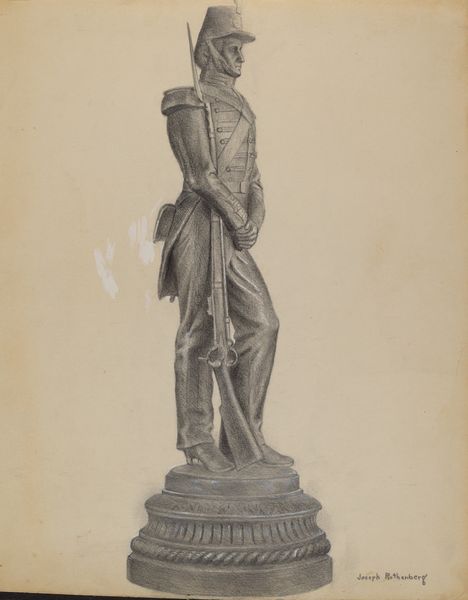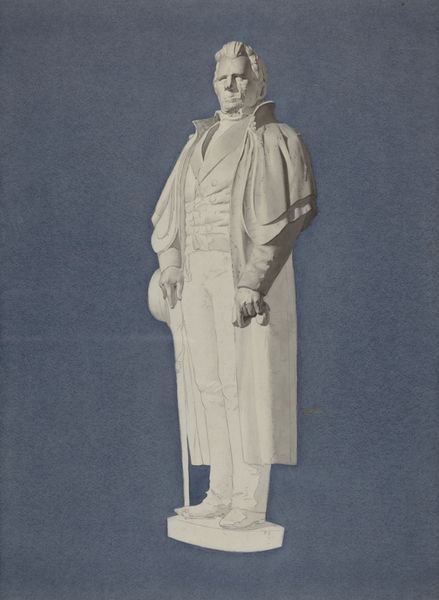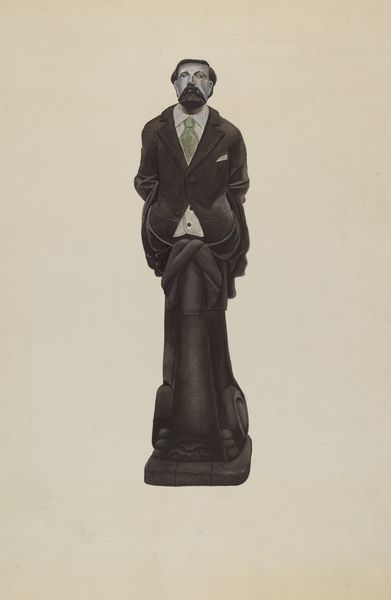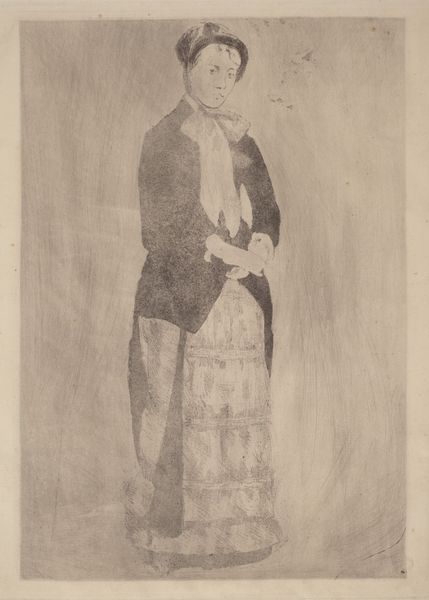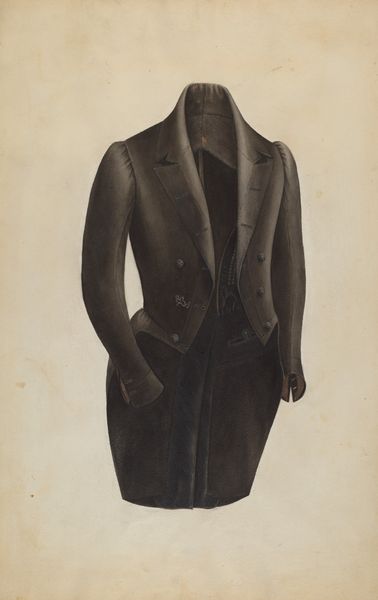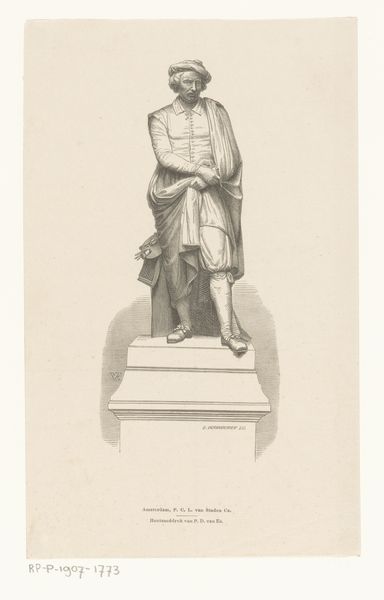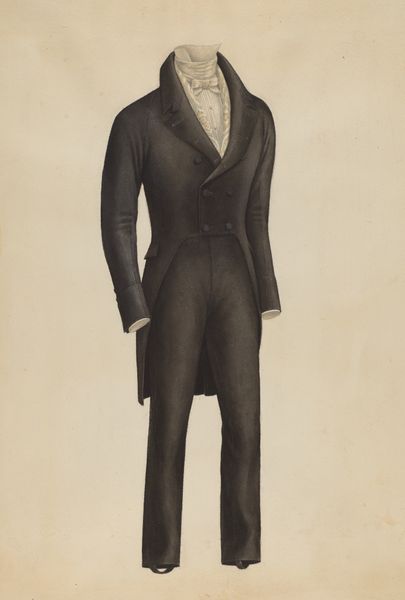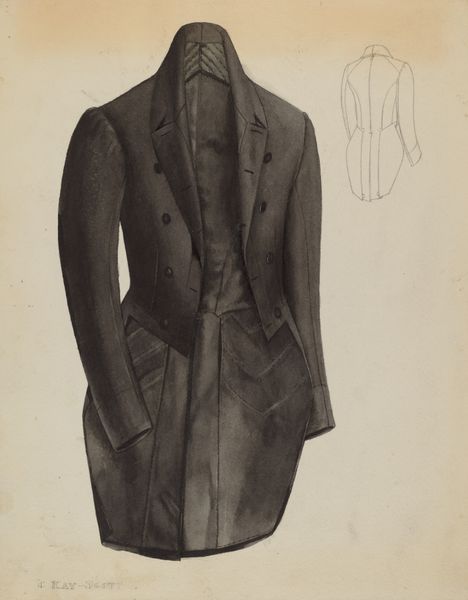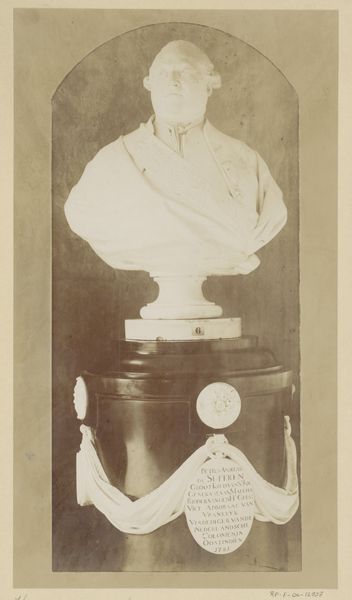
drawing, sculpture, graphite, charcoal
#
portrait
#
drawing
#
charcoal drawing
#
figuration
#
sculpture
#
graphite
#
charcoal
#
charcoal
#
graphite
#
statue
Dimensions: overall: 56 x 35.8 cm (22 1/16 x 14 1/8 in.)
Copyright: National Gallery of Art: CC0 1.0
Curator: Here we have Louis Plogsted’s drawing "Statue," created sometime between 1935 and 1942 using charcoal and graphite. The artwork presents a study of a statue depicting a uniformed firefighter. What strikes you about this, at first glance? Editor: Its austere quality is immediately apparent, an effect intensified by the monochromatic medium. It feels rigid, almost neoclassical in its deliberate, idealized form. Curator: That rigidity speaks to its possible function. Statues, particularly those of public figures, serve as cultural anchors, meant to embody a set of values. This firefighter, standing tall, likely symbolized courage, duty, and service to the community. The placement atop a base decorated with wave-like designs might also speak to fire-fighting in a specific geographic area near water. Editor: Interesting. Looking at the drawing itself, I am fascinated by how Plogsted balances detailed areas like the firefighter's face with more broadly rendered sections like the coat and legs. It brings focus without making it photographic. The line is precise, almost architectural. Curator: It's true, there’s a calculated order. The drawing may even be a preparatory sketch for an actual statue. I notice the placement of the helmet – a direct nod to the figure’s trade. Its presence on the head bears so much meaning! It embodies the danger that those in the firefighting professions bravely undertake. Editor: The shadowing created by the charcoal defines the man’s stoicism, it gives weight to his composure, wouldn’t you agree? Also, what of the horn object that he is holding? I wonder about its functionality, if it really belonged to this fireman. Curator: Indeed. These public statues were about portraying civic virtue in a relatable form. The drawing style itself adds a certain heroic dimension – perhaps an echo of classical sculpture styles in a modern age of public service. In some cultures fire fighters were very valorized! The subject's expression reveals the dedication these fire fighters hold, for both the people they served, and to their duty. It speaks volumes of American work culture at that time. Editor: It really brings that sense of historical presence forward. There is so much you notice in this image with each successive glance. Curator: It gives new perspectives to cultural awareness, I'm thankful we can share it today.
Comments
No comments
Be the first to comment and join the conversation on the ultimate creative platform.
